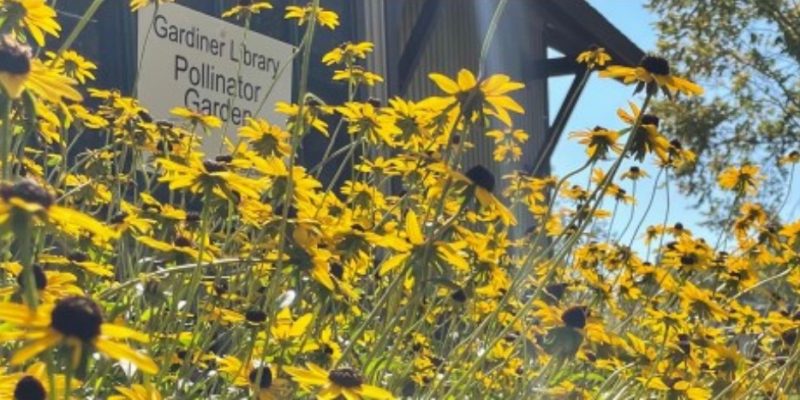
A riparian (forested) buffer zone is an area along a shoreline, wetland or stream where land disturbance is restricted or prohibited. The primary function of a riparian buffer is to physically protect and separate a stream, lake, or wetland from future disturbance or encroachment and pollinators (bees, butterflies, bats, beetles, birds, flies, wasps, ants, moths, etc.) love them. This summer and fall, two exciting projects are merging into one pollinator-riparian buffer on a Wallkill River farm. The Hardenbergh-Jenkins Farm, founded in 1743, is listed on the national register of historic places. The farm sits on a rich alluvial level floodplain, with expansive views of fields, including river views, ending at distant woodlands. The lawn is surrounded by hayfields which are periodically cut. Adjacent fields contain alfalfa and sometimes corn. The farm has been in continuous production since its inception in the 18th century and has never been anything but a farm. Owner Vals Osborne put the farm under a conservation easement in 2004 with the Wallkill Valley Land Trust in order to protect it from development. Now it needs other kinds of protection.
Growing up here 70 years ago, Vals remembers a very different riverbank. “I would say that we’ve lost about 10 feet of riverbank, judging from some markers in the river since I was a kid.” With almost a mile of riverfront, she became increasingly concerned about the erosion to the bank and fields, and contacted the DEC’s Trees for Tribs (TFT) program. TFT has been providing free trees for volunteer plantings over the past 15 years to great success. In fact, through the TFT program, the Gardiner Trail Alliance planted 670 trees just across the river from the farm!
Vals also enquired about a new project called Pollinate Now! – an initiative from the Partners for Climate Action Hudson Valley. They were seeking four model sites on which to install plantings in support of at-risk pollinators. Vals had already begun planting more native plants in support of pollinators. She says “I really am seriously interested in preserving our insect life, our pollinators, and other wildlife.”
Vals applied for and was accepted by both the TFT and Pollinate Now! projects.
“Both these projects are community-oriented, learning experiences for everybody. One of the things that we love is that TFT and Pollinate Now! are working in collaboration. TFT has done an amazing job planting trees over the years, providing riparian buffers which protect riverbanks—but they have never approached the plantings from a pollinator perspective and they are willing to work with us to provide pollinator-friendly trees and shrubs.”
In addition to protecting the riverbank with a plant buffer and supporting pollinators by using appropriate plant species, Vals decided to further support pollinators and the environment by reducing the size of her lawn. The pollinator riparian buffer project includes two meadows, one of which will replace about 5000 square feet of lawn near the farmhouse, and the other meadow will replace about 5000 square feet of hayfield along the river.
Three volunteer events will be used to prepare and install the plantings for the pollinator-riparian buffer. The first event, held on May 21st, was for the pollinator meadow preparation and involved covering the two meadow areas with tarps. Volunteers laid plastic tarps held down by sandbags. The plastic will smother the existing plants over the summer so that the meadows can be planted in the fall. The second event will be held on October 1st for the tree- and shrub-planting along the river. On November 18th, volunteers will sow meadow-seeds. These events are an excellent learning opportunity for people interested in meadows or ways to reduce lawns, how to plant trees, and how to provide erosion protection from the river. Anyone interested in volunteering for the October 1st or November 18th events can contact wildonesMHV@gmail.com or register on Wild Ones Mid-Hudson Valley events page: https://midhudsonvalley.wildones.org/events. Tasty refreshments will be provided to the hungry volunteers.
Anyone with similar sites or conditions can adapt this model project for their riparian-buffer plantings on the Wallkill River or for other meadow plantings. The Partners for Climate Action will be offering a “Toolkit” for the Pollinate Now! projects—all in the Hudson Valley Eco-region using native-plant designs specifically tied to their pollinator interactions. To learn more visit www.climateactionhv.org/initiatives/pollinate-now.
